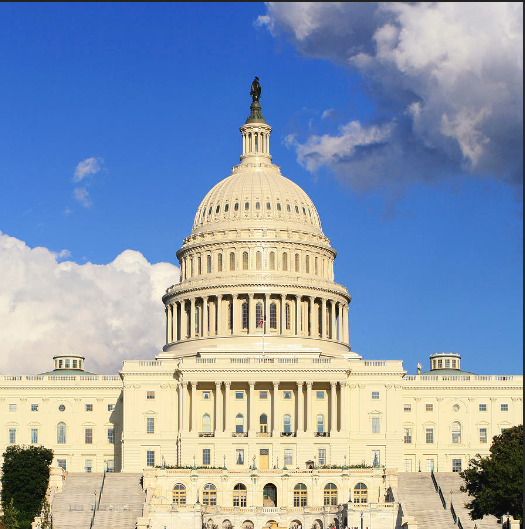Four Ways Workforce Boards Can Better Serve Immigrant and Refugee Jobseekers

Katie Brown, PhD
New Americans play an increasingly crucial role in the U.S. economy. With immigrants and refugees offering valuable multilingual and cross-cultural competencies to their employers—and with recent immigrants being about as likely as their U.S. peers to have a bachelor’s or postgraduate degree—they are poised to make significant contributions to the workforce in the years ahead. By 2030, immigrants and their children are projected to account for 97 percent of the growth in our workforce.
Even so, systemic challenges and hurdles vastly limit employment options for immigrants and refugees. Indeed, nearly 2 million college-educated immigrants and refugees are unemployed or underemployed in the United States, the result of English barriers, limited professional networks, and uneven access to workforce development programs. We must actively foster their inclusion.
For many immigrants and refugees, that support will come from the same place as it already does for 15 million U.S. workers each year: workforce boards. Here are four ways workforce boards can better serve new Americans.
1. Focus on Outreach
It’s important to meet all job seekers where they are. Many immigrants and refugees might not know workforce boards exist or how they should access the resources these boards offer. Workforce boards can think about where these job seekers are most likely to be found and target their outreach in response. This could mean designing outreach efforts that directly connect with immigrant and refugee communities in local churches, schools, and other community-oriented spaces, as well as through online networks and community media.
A growing network of communities are proactively connecting with immigrant communities to promote local English learning opportunities. A handful of home-grown programs exist in places like Prince George’s County, Maryland, and Piscataway, New Jersey, where parents attend evening or weekend classes in their children’s schools. Miami-Dade County in Florida offers a countywide parent academy that leverages technology to solve problems of space and time as it provides training to district families. Workforce boards could forge similar partnerships with schools, houses of worship, and community centers.
2. Advance Access
Ensuring that all job seekers can access workforce board services is essential to building an inclusive, fully-staffed local workforce.
Boards can take steps to ensure that the process to access resources and opportunities is simplified and streamlined.
It’s crucial administrators ensure all outreach, communications, and services are offered in languages other than English. Workforce boards should provide materials in a variety of languages and recruit bilingual case workers and coaches. They can better support immigrants and refugees by asking them directly how to best meet their needs beyond basic services, including considerations like transportation and childcare.
In Lake Tahoe, California, a network of local organizations, government offices, employers, and higher education institutions—collectively known as ADVANCE—works together to provide a range of personalized, needs-based services for workers and adult learners. Recognizing that 38 percent of Lake Tahoe’s population is Hispanic and that many workers speak a language other than English, ADVANCE developed a customized English curriculum to serve as an entry point to the initiative’s Tahoe Lift Maintenance Apprenticeship.
3. Provide Targeted Support
Workforce boards must rely on more than a one-size-fits-all approach. Instead, they should design coaching, mentorship, and other wraparound services that target the specific needs of local workers—including immigrants. Boards can offer virtual and on-demand services to help workers schedule around childcare and other logistical challenges. And they can ensure mentors and coaches are bilingual, have the cultural competency required to engage effectively with learners, and are trained to address the unique challenges that may come with the immigrant and refugee experience.
Such tactics are already in use within postsecondary education. Virginia’s Peninsula and Regional Education Program (PREP), for instance, offers a three-step bridge program for learners who want to participate in PREP’s adult education offerings but who are still learning English. Students begin with blended in-person and digital English instruction, before moving onto career bootcamps, and ultimately a career certification program at Thomas Nelson Community College. Along the way, they continue to receive assistance from a dedicated English instructor.
4. Prioritize—and Personalize—English Learning
With English proficiency remaining
one of the largest hurdles facing immigrant and refugee job seekers, English training is a critical upskilling tool. However, workforce boards must do more than simply point prospective workers toward the nearest adult ESL program. Decades of
research have shown us that the most effective method is personalized language learning tailored to adults’ real-world needs. Boards must create English programs that integrate sector-specific workforce skills and context.
They can turn to a growing number of companies for inspiration. Taziki’s Mediterranean Café, for example, has long placed an emphasis on hiring immigrants and refugees, and the company includes personalized English training among the benefits it provides its workers. The training is customized to reflect the culture and demands of working at Taziki’s, while also being tailored to easily fit into the busy lives of its employees.
Immigrants and refugees have so much to offer local employees and communities. But, just like many other workers attempting to advance in their careers or transition to new fields, they need support. Workforce boards can and must serve as a gateway to opportunity for these new Americans.
Katie Brown, PhD, is founder of EnGen, a Certified B Corporation that has delivered personalized, digitized, career-aligned English language upskilling to more than 45,000 adult learners across the U.S. since its launch in 2020. Learn more at
getengen.com


National Association of Workforce Boards | All Rights Reserved |
Created by Olive + Ash.
Managed by Olive Street Design.









